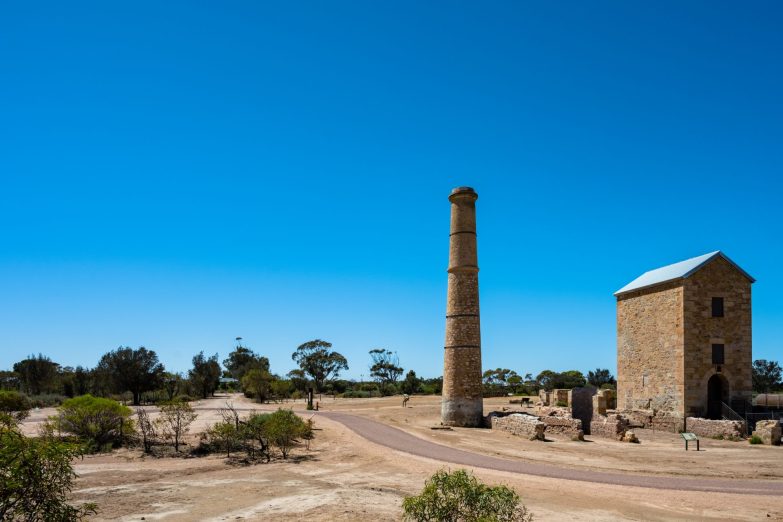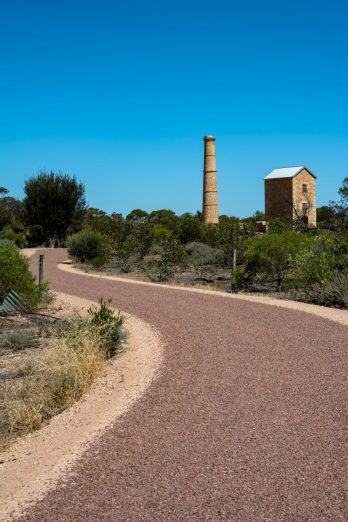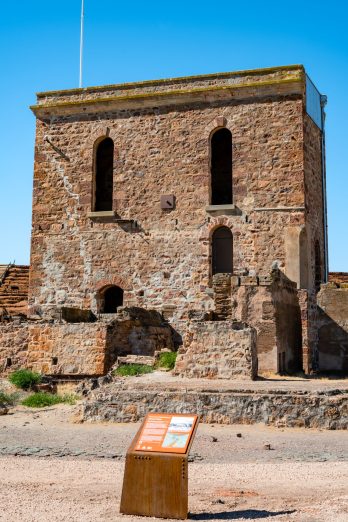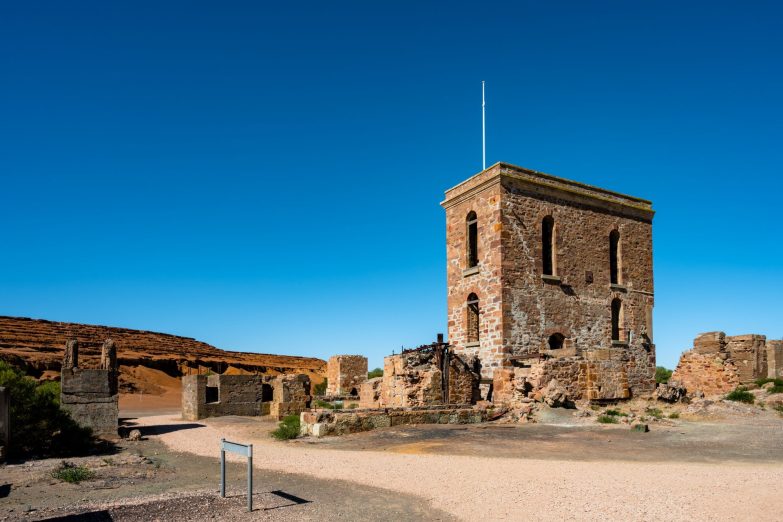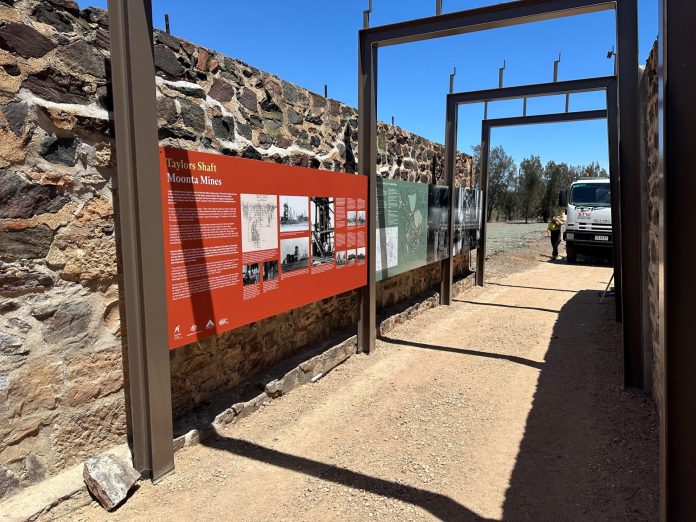Work is coming to a close on one of the most significant heritage conservation projects undertaken by the National Trust of South Australia, changing how visitors experience the Moonta Mines precinct, writes Regional Operations Manager Laura Evans.
The Moonta Mines State Heritage Area, along with the Burra State Heritage Area, marks the first major transfer of Cornish mining technology, and Welsh smelting technology, to the other side of the globe. These sites have such international significance that in 2024 they were placed on the Australian Government’s Tentative List for potential nomination for UNESCO World Heritage status. The case being compiled to secure this honour includes leveraging work being done at Moonta to conserve its mining landscape and elevate the visitor experience as part of a mammoth project funded by a $4.9 million grant from the Australian Government. After delays caused by the pandemic, supply chain issues and rising costs, work commenced in early 2022, in partnership with the Copper Coast Council and local community.
Critical conservation works are now nearing completion, including the addition of a roof on the iconic Hughes Enginehouse, so visitors can better imagine its original form. Enclosing the building will also prevent deterioration caused by weather and birdlife, far extending the life of the structure. In an earlier stage of the project missing stones were replaced and the foundations stabilised.
Another major element has been creating new access trails and interpretative signage. A semi-undercover walkway adjacent to Taylors Shaft recreates the feel of a tunnel, inviting visitors to get up close to the precinct’s ore floors – a visually stunning remnant of the impact of mining on the landscape. A longer trail now gives visitors an entirely new perspective and experience. The 3.2-kilometre walk brings visitors close to sites previously only accessible by ‘bush-bashing’ and means people can more deeply understand just how closely the mechanical and social worlds of the mines overlapped. The walkways are suitable for cycling and mobility aids, further opening these worlds to new audiences.
At the heart of new interpretation is how people have experienced this complex landscape over time. The irrevocable impact of mining on the Narungga people cannot be understated, from the interruption of ancient ancestral movement patterns to altering vegetation and waterways. In terms of western heritage, the landscape of the Moonta precinct is an expression of the profound impact Cornish mining practices had on global technology, industry and migration patterns. Visitors are invited to consider how people lived at the peak of the mines’ activity, how the sites worked, how people moved amongst them and what that means to the present day.
This project would not been possible without the knowledge and passion of many people and organisations. Cooperation between the National Trust, Copper Coast Council and Narungga has meant works reflect the complex history of the site, and have made it possible to realise aspirations for more people to explore it. The Moonta Branch has been exceptionally generous with sharing and conducting research, and providing input into concept development. Project management has been ably led by Stoneideas, and Swanbury Penglase Architects have continued their long partnership with the National Trust in facilitating the first-class heritage architectural work. Thanks also go to Propeller Design and Sign Language SA for designing and installing the new wayfinding and interpretative signage.
Come and explore
For a wealth of information about the Moonta Mines historic precinct, its attractions and suggested visitor itineraries please visit moontaheritage.com.au
The Moonta Branch is also keen to hear from people willing to volunteer and help care for our places and share them with visitors. To find out more email info@moontaheritage.com.au or phone 8825 1891
